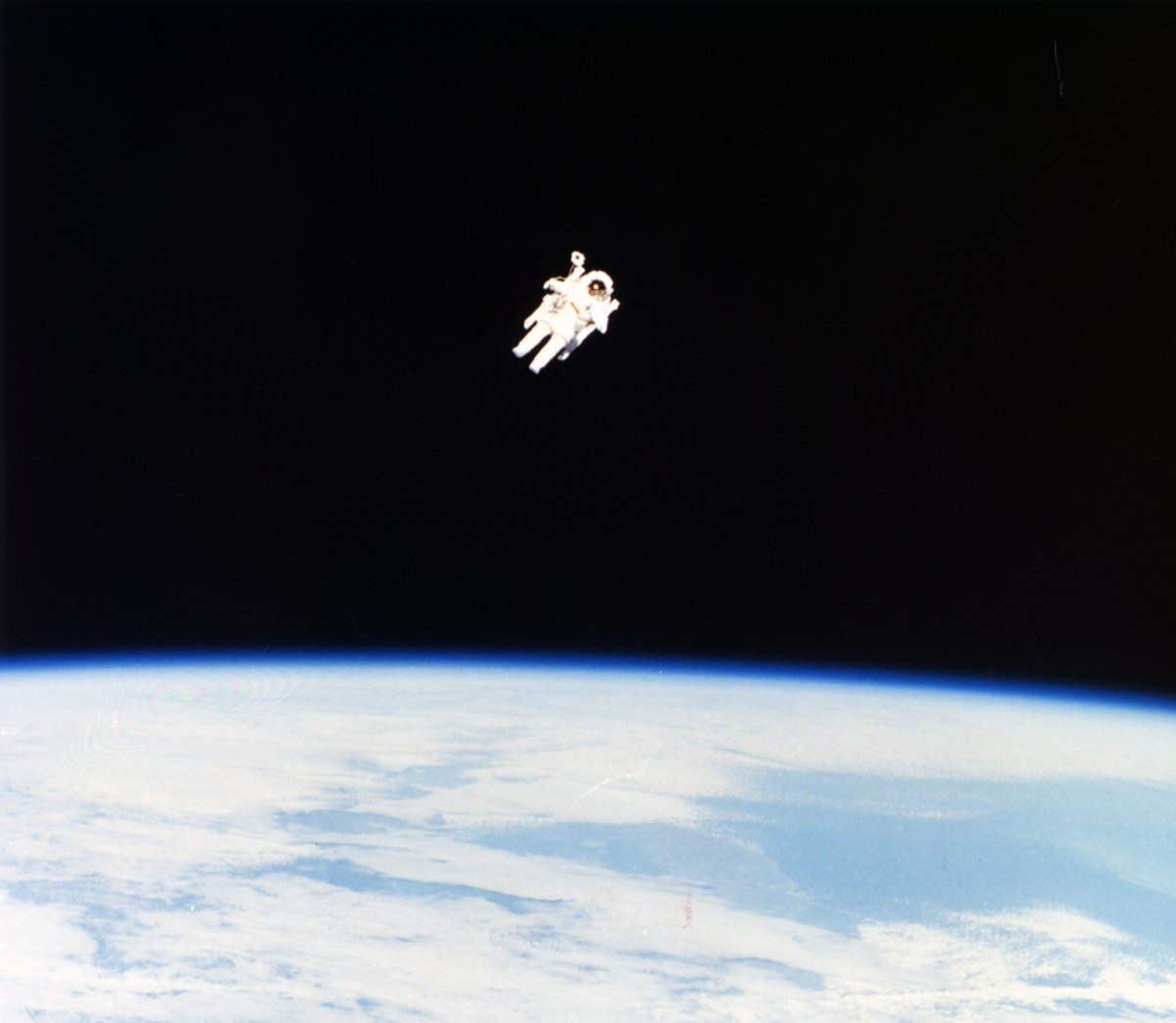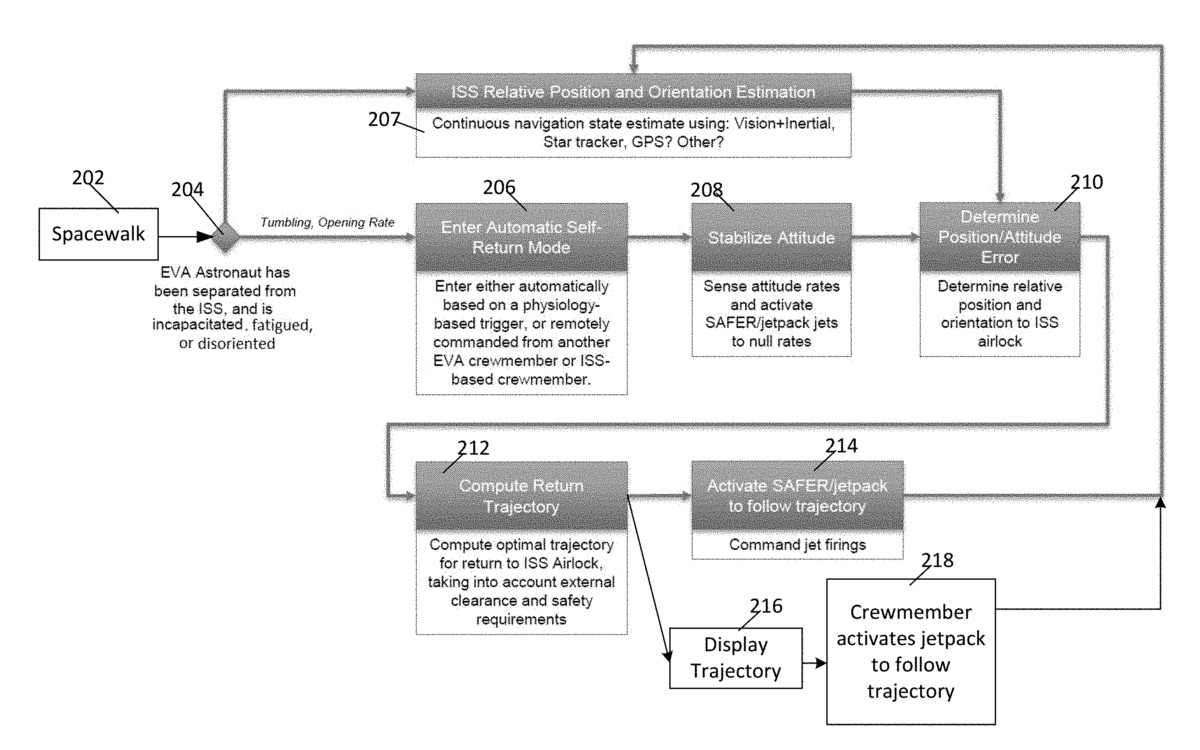
Smart Spacesuit Could Save Lost Astronauts with 'Take Me Home' Button

Being "lost in space" is a nightmare scenario for astronauts, but they soon could be sleeping easier.
Engineers have filed a patent for a spacesuit self-return system to ensure spacewalking astronauts are safe, even if none of their crewmates can rescue them.
This system is, essentially, a "take me home" button. [The Evolution of the Spacesuit in Pictures]
Self-return
Lead inventor Kevin Duda, a space systems engineer at the Charles Stark Draper Laboratory in Cambridge, Massachusetts, has studied astronauts and life on the International Space Station a great deal.
The self-return spacesuit system, Duda explained, had to be capable of determining a precise location in a harsh space environment where GPS is unavailable. It had to compute an optimal return trajectory that accounts for time, oxygen consumption, safety and clearance requirements, and it had to be able to guide a disoriented and possibly unconscious astronaut to safety effectively.
Draper Director of Space Systems Séamus Tuohy said the return-home technology is an advance in spacesuits that is long overdue.
"The current spacesuit features no automatic navigation solution — it is purely manual — and that could present a challenge to our astronauts if they are in an emergency," Tuohy said.
Get the Space.com Newsletter
Breaking space news, the latest updates on rocket launches, skywatching events and more!
According to the patent, Draper's "take me home" system can be configured to monitor the movement, acceleration and position of the crewmember relative to a fixed object, such as an accompanying orbiting spacecraft.
Data fusion
The system's navigation, guidance and control modules can accommodate various scenarios. For instance, the navigation module can be configured using GPS, vision-aided navigation or a star-tracker system. [The Most Memorable Spacewalks in History]
Additionally, to improve the astronaut's positioning and orientation, Draper has developed software that fuses data from vision-based and inertial navigation systems and that benefits from the advantages of both sensing approaches.
The team's research into spacesuits is funded by NASA.

Down to Earth
Draper's "take me home" system can also be of benefit down here on Earth, the inventors said.
For example, clothing equipped with sensors and other smart tech could serve as an added safety measure for first responders and firefighters as they navigate smoke-filled rooms. The spacesuit could also assist skydivers hurtling toward Earth and scuba divers who might become disoriented in deep water.
To view the patent, "System and method for assisted extravehicular activity self-return," go to: https://patents.justia.com/patent/20170192425.
Leonard David is author of "Mars: Our Future on the Red Planet," published by National Geographic. The book is a companion to the National Geographic Channel series "Mars." A longtime writer for Space.com, David has been reporting on the space industry for more than five decades. Follow us @Spacedotcom, Facebook or Google+. This version of this story was posted on Space.com.
Join our Space Forums to keep talking space on the latest missions, night sky and more! And if you have a news tip, correction or comment, let us know at: community@space.com.

Leonard David is an award-winning space journalist who has been reporting on space activities for more than 50 years. Currently writing as Space.com's Space Insider Columnist among his other projects, Leonard has authored numerous books on space exploration, Mars missions and more, with his latest being "Moon Rush: The New Space Race" published in 2019 by National Geographic. He also wrote "Mars: Our Future on the Red Planet" released in 2016 by National Geographic. Leonard has served as a correspondent for SpaceNews, Scientific American and Aerospace America for the AIAA. He has received many awards, including the first Ordway Award for Sustained Excellence in Spaceflight History in 2015 at the AAS Wernher von Braun Memorial Symposium. You can find out Leonard's latest project at his website and on Twitter.









